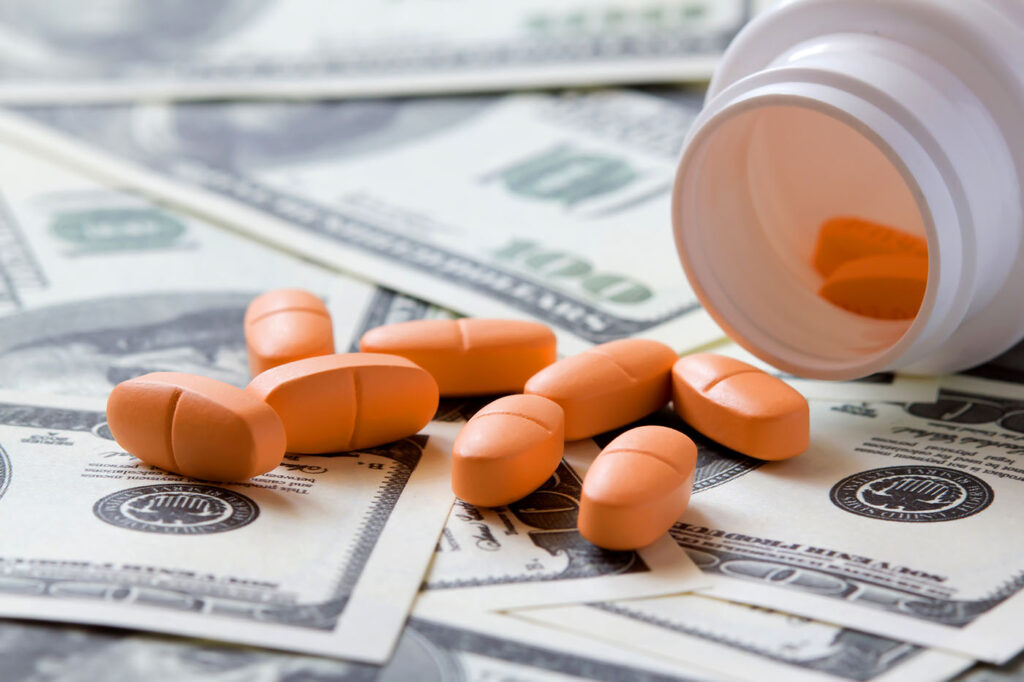As the largest purchaser of pharmaceuticals, Americans should get the best deal,” President Donald Trump declared May 12, 2025, in Executive Order 14297, aimed at lowering the nation’s sky-high prescription drug prices—and delivering on his campaign promise to that effect—by pegging them to their prices in other developed countries.
Because those countries oversee healthcare systems that set drug prices through government bodies, they are lower than prices paid by Americans. “This abuse of Americans’ generosity, who deserve low-cost pharmaceuticals on the same terms as other developed nations, must end,” Trump’s order demanded in laying out his “most favored nation” (MFN) drug pricing policy.
MFN is opposed by biopharma industry groups, and it remains to be seen how or if Trump’s vision for reduced drug costs will be achieved, and to what extent. Analysts from Jefferies have predicted little if any chance for Congressional approval of MFN.
“Importing socialized medicine will not make Americans healthier or our economy stronger. It will only serve to empower China and our other adversaries and undermine our economic and national security,” fumes John F. Crowley, president and CEO of the Biotechnology Innovation Organization (BIO).
Pfizer Chairman and CEO Albert Bourla, DVM, PhD—who is also chairman of Pharmaceutical Research and Manufacturers of America (PhRMA)—has suggested an alternative to MFN: Countries should commit to spending a given percentage of their gross domestic product, as NATO members have agreed in recent years on a percentage toward national defense. Addressing the Goldman Sachs Global Healthcare Conference on June 9, according to a transcript, Bourla said he envisions “a mechanism that everyone should have a percentage that they spend on innovative medicines. And then, of course, every country can decide how they want to allocate that.”
Biopharmas have long justified rising drug prices as necessary to recoup the cost of developing new drugs—an argument rejected in a 2022 study published in JAMA. In any case, drug costs continue to climb, rising last year by five percent, from $2.12 billion to $2.23 billion, according to this year’s 15th edition of the annual Measuring the Return from Pharmaceutical Innovation report by the Deloitte Centre for Health Solutions. The increase comes even as biopharmas have slowed down their spending increases on R&D, to a compound annual growth rate of 6.44% from 7.69% during 2013-2020.
Here is GEN’s updated A-List of the top 10 best-selling prescription drugs based on 2024 sales. Top-selling drugs are ranked based on sales or revenue reported for 2024 by biopharma companies in press announcements, annual reports, investor materials, and/or conference calls. Each drug is listed by name, sponsor(s), 2024 sales, 2023 sales, and the percentage change between those years.
The total 2024 aggregate value of the top 10 best-selling drugs was $154.888 billion, up 6.5% from $145.495 billion in 2023—and up 53% over five years from the $101.15 billion generated in 2019, as highlighted by GEN.
Treatments ranked number 11 through number 15 in 2024 generated between approximately $8.6 billion and $10.2
billion in revenues:
- Trikafta/Kaftrio (elexacaftor/tezacaftor/ivacaftor and ivacaftor) from Vertex Pharmaceuticals
- Opdivo® (nivolumab) from Bristol Myers Squibb and Ono Pharmaceutical
- Eylea/Eylea HD (aflibercept) from Regeneron Pharmaceuticals and Bayer
- Humira® (adalimumab) from AbbVie, which had been the top-selling drug for years until being surpassed by Keytruda
- Gardasil/Gardasil 9 (Human Papillomavirus Quadrivalent (Types 6, 11, 16, and 18) Vaccine, Recombinant/Human Papillomavirus 9-valent Vaccine, Recombinant) from Merck & Co.
2024 marked the first year since GEN began tracking best-selling drugs in 2013 that Humira missed the top 10 entirely, just a year after it was dethroned from the top spot by the best-selling drug that also topped the list. Humira generated $8.993 billion in sales last year thanks to increased competition from biosimilars in the U.S. (which started in 2023) in addition to biosimilars that have successfully competed in Europe since 2019.
1. Keytruda
(pembrolizumab) Merck & Co.
2024 Sales: $29.482 billion
2023 Sales: $25.011 billion
% Change: +17.9%
2. Eliquis
(apixaban) Bristol Myers Squibb and Pfizer
2024
Sales: $20.699 billion
($13.333 billion BMS + $7.366 billion Pfizer)
2023
Sales: $18.953 billion
($12.206 billion BMS + $6.747 billion Pfizer)
% Change: +9.2%
3. Ozempic
(semaglutide) Novo Nordisk
2024
Sales: $18.655 billion
(DKK 120.342 billion)
2023
Sales: $14.846 billion
(DKK 95.718 billion)
% Change: +25.8%
4. Dupixent
(dupilumab)1 Sanofi and Regeneron Pharmaceuticals
2024
Sales: $15.125 billion
(€13.072 billion)
2023
Sales: $12.398 billion
(€10.715 billion)
% Change: +22.0%
5. Biktarvy
(bictegravir, emtricitabine, and tenofovir alafenamide) Gilead Sciences
2024 Sales: $13.423 billion
2023 Sales: $11.850 billion
% Change: +13.3%
6. Jardiance family
(empagliflozin, monotherapy and in combinations with linagliptin and metformin)2
Boehringer Ingelheim and Eli Lilly
2024 Sales: $13.012 billion
($9.671 billion [€8.357 billion] Boehringer Ingelheim + $3.341 billion Eli Lilly)
2023 Sales: $11.287 billion
($8.542 billion [€7.382 billion] Boehringer Ingelheim + $2.745 billion Eli Lilly)
% Change: +15.3%
7. Skyrizi
(risankizumab-rzaa) AbbVie
2024
Sales: $11.718 billion
2023
Sales: $7.763 billion
% Change: +50.9%
8. Darzalex (daratumumab)
Darzalex Faspro
(daratumumab and hyaluronidase-fihj)
Johnson & Johnson and Genmab3
2024 Sales: $11.670 billion3
2023 Sales: $9.744 billion3
% Change: +19.8%
9. Mounjaro (tirzepatide)
Eli Lilly and Company
2024
Sales: $11.540 billion
2023
Sales: $5.163 billion
% Change: +123.5%
10. Stelara (ustekinumab)
Janssen Biotech (Johnson & Johnson)
2024 Sales: $10.361 billion
2023 Sales: $10.858 billion
% Change: -4.6%
Footnotes
1. Sanofi records global net product sales of Dupixent, with each company recording its half-share of profits on global sales of the drug.
2. The Jardiance family consists of Jardiance (empagliflozin); Synjardy (empagliflozin and metformin); Synjardy XR (empagliflozin and metformin extended-release); Glyxambi (empagliflozin and linagliptin); and Trijardy XR (empagliflozin, linagliptin, and metformin extended-release).
3. All sales figures are recorded by Johnson & Johnson, with Genmab receiving royalties on worldwide sales from J&J. Genmab does not disclose specific royalty revenues for Darzalex and Darzalex Faspro, but says those royalties were one of two primary drivers of the company’s 27% increase in royalty revenue last year, to DKK 17.352 billion ($2.641 billion) from DKK 13.705 billion ($2.086 billion) in 2023.




